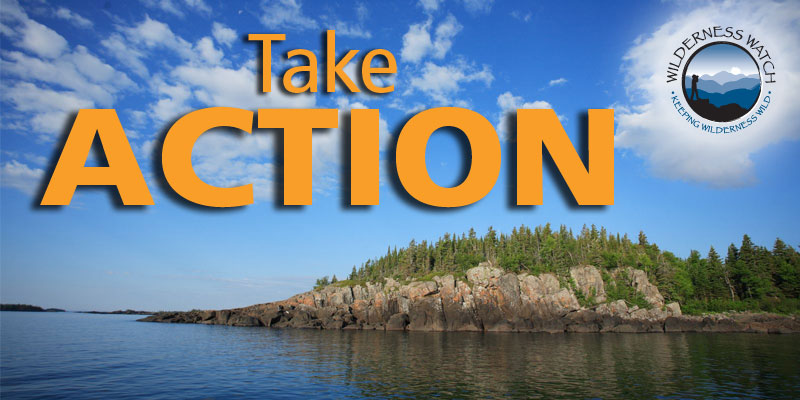Isle Royale: Keep it Wild and Let the Wolves Decide
The National Park Service (NPS) has released its “Draft Environmental Impact Statement to Address the Presence of Wolves” (DEIS) for Isle Royale National Park and Wilderness in Michigan. Your comments are due by March 15 to insure that the Isle Royale Wilderness remains wild by letting wolves decide their future.
Isle Royale National Park is an island archipelago located in the northwestern portion of Lake Superior. Established as a national park in 1940, the park consists of a main island and approximately 450 smaller islands. Congress designated about 99 percent of the park (132,018 acres) as Wilderness in 1976 under the 1964 Wilderness Act.
Both moose and wolves are relatively recent migrants to Isle Royale. For hundreds of years prior to the early 20th century, the dominant predator-prey dynamic on Isle Royale was between woodland caribou and Canada Lynx. After wolves first came to Isle Royale around 1948-50, a famous predator-prey study began researching the dynamics between wolves and moose there in the late 1950s and has continued to today. This research has yielded many important ecological understandings of predator-prey dynamics.
But after decades of inbreeding, the wolf population has dropped to only two, with little likelihood that it will recover, and it may become extirpated from Isle Royale. The Park Service has proposed in the new DEIS to import 20-30 new wolves from the mainland over three to five years for visitors and researchers who want wolves on Isle Royale and to allegedly keep the moose population in check. Each wolf would be collared so researchers could track their every move.
While Wilderness Watch has long worked to protect wolves in Wilderness, we believe the best course of action on Isle Royale is Alternative A, the No Action Alternative, for the following reasons:
1. Alternative A best protects Isle Royale’s wilderness character. The 1964 Wilderness Act defines wilderness in part as “untrammeled” or unmanipulated. That means humans should not manipulate the wolf population at Isle Royale but should let Nature and the wolves themselves determine their fate there. The wolves should remain un-collared. Collaring the wolves would make them and theWilderness less wild and more like a managed zoo population than a wild and free wolf population.
2. Alternative A lets the wolves decide their future, if any, on Isle Royale. In February 2015, for example, two wolves from the Grand Portage on the Minnesota mainland crossed the ice bridge to Isle Royale. They stayed there for five days, but then quickly returned to the mainland before they could be trapped by weakening ice, and despite the abundant moose to eat. Isle Royale may not be the mecca for wolves that we have often heard, and those two wolves may have sensed something about the island (such as its relatively small size) that prompted them to return to the mainland. Over the years, other wolves have also fled Isle Royale during ice bridge winters. If mainland wolves want to come to Isle Royale during ice bridge winters (and we recognize there are fewer ice bridge winters recently than before), we should allow them to make those choices.
3. Alternative A recognizes the principles of island biogeography that describe how on islands some species arrive and some species become extirpated at rates higher than the nearby mainland. Both wolves and moose are relatively new migrants to Isle Royale, replacing woodland caribou and Canada lynx that had lived there for hundreds of years.
WHAT YOU CAN DO
Please go to the NPS comment website and tell the NPS that you support Alternative A, the No Action Alternative, for the following reasons:
1. Alternative A is the only alternative that honors the wilderness designation for the Isle Royale Wilderness and helps to keep the island and its wolves wild. That designation tells us to treat the Isle Royale Wilderness as an untrammeled, unmanipulated area as directed by the 1964 Wilderness Act.
2. Alternative A lets the wolves decide their fate, and won’t let the wolves become a collared and captive population there.
3. Alternative A best recognizes and respects the effects of island biogeography, and that it is natural for species to arrive and some species to become extirpated on islands like Isle Royale.
Thanks for your help in keeping the Isle Royale Wilderness wild, and for letting wild wolves decide their future there!
WANT TO DO MORE?
Please consider making a donation to support our work to protect Wilderness and wildlife.
TAKEA
CTION
Photo: Ray Dumas via flickr
|

